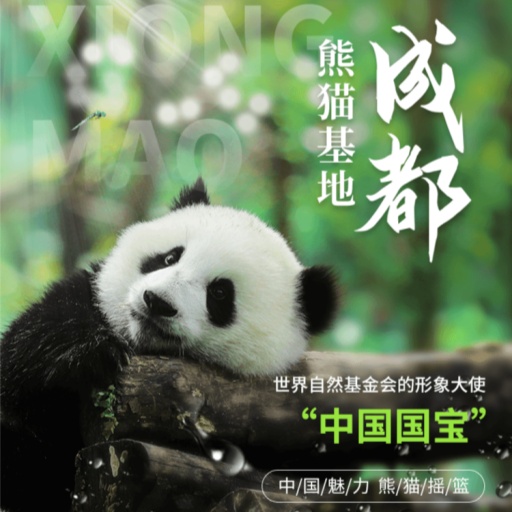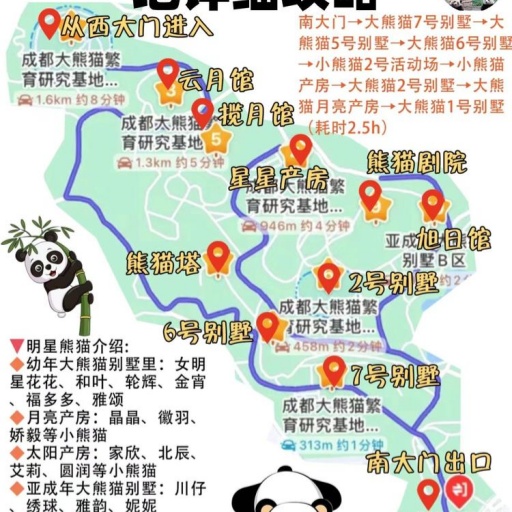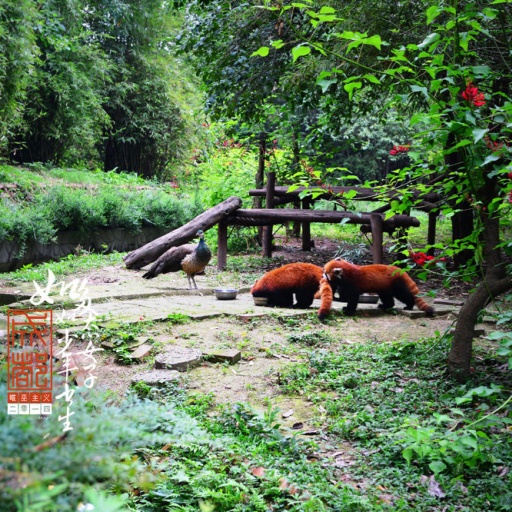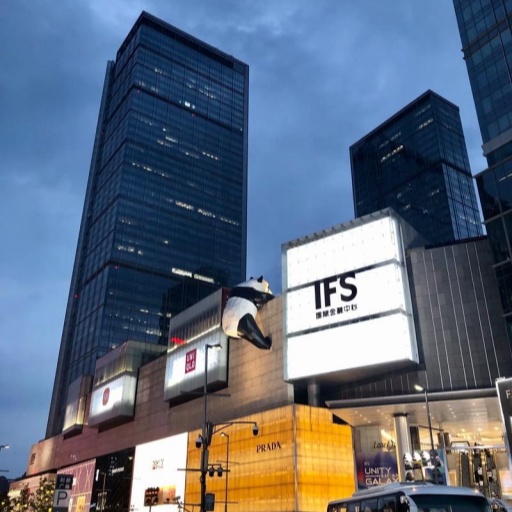If you’re planning a trip to see the famous Chengdu pandas, you’re in for a real treat! Chengdu isn’t just any city—it’s the world’s panda capital and home to some of the most important panda research centers on the planet. Whether you’re a wildlife fan or just looking for a fun, affordable adventure, visiting the giant pandas here is a must. This guide breaks down everything you need to know—from the best spots to catch a glimpse of these adorable creatures, to tips for going solo or joining a tour. Ready to dive into your first-time panda trip in Chengdu? Let’s get started!
Where Can You See Pandas in Chengdu?

Chengdu Research Base of Giant Panda Breeding
Why Chengdu Is Considered the Panda Capital of the World
Chengdu isn’t just panda central because of branding—it genuinely earned that title. It’s the original homeland of the giant panda, with lush bamboo forests dotting the surrounding Sichuan mountains. For centuries, locals have shared their land with these black-and-white icons, even weaving them into their folklore and regional identity. Ask any Sichuan local, and they’ll likely have a story involving pandas, rainy mountain trails, or forest myths passed down generations.
More than just a natural habitat, Chengdu is home to the Chengdu Research Base of Giant Panda Breeding, a global powerhouse for panda conservation. Started with just six rescued pandas in the late 1980s, the center has become a worldwide benchmark in panda breeding science. Its researchers collaborate with international institutions, and pandas born here have gone on to represent China in zoos across the globe. If you’ve seen a panda outside of China, chances are it has roots in this city.
That reputation didn’t come overnight. The base’s success is deeply tied to the region’s ecology, local government support, and years of tireless research. It’s also a big deal culturally—visiting the base has become a rite of passage for locals and a must-do for travelers. Simply put, when you’re in Chengdu, you’re in the heart of panda country, both literally and emotionally.
What Are the Best Places to See Pandas in Chengdu?
The number one spot? The Chengdu Research Base of Giant Panda Breeding. It’s easily accessible from downtown, and its dense bamboo groves and well-designed habitats make it feel like you’re in the wild. This place is the go-to, especially if you’re tight on time. You’ll see adult pandas, cubs, and even the famed “Moonlight Delivery Room” where babies are born (and sometimes squealing loudly).
If you’re up for a longer trip, head to Dujiangyan Panda Valley. Located about an hour away by car or train, it’s less crowded and more tranquil. You’ll find larger enclosures and fewer people jostling for panda selfies. Some travelers even get the chance to sign up for short-term volunteer programs—yes, you can clean panda poop, if that’s on your bucket list. It’s also one of the few places where you might catch a glimpse of pandas being prepared for the wild.
Want something even further out? Try Bifengxia Panda Base in Ya’an. It’s two hours from Chengdu, nestled in a lush canyon that feels straight out of a nature doc. This base often houses rescued or older pandas. The vibe is slower, and the air feels different—cooler, wilder, more remote. If you’re looking for an off-the-beaten-path panda encounter, this is it. Just note that public transport is limited, so plan ahead or consider hiring a driver.
How can I Visit Chengdu Pandas on a Budget?

China’s National Treasure: The Giant Panda
Traveling Independently is Cheaper than Toining a Tour
Let’s get straight to it — yes, visiting the Chengdu panda bases without a tour is totally doable and often more rewarding. If you’re comfortable navigating a metro map or calling a Didi, there’s no real need for a tour group. For places like the Chengdu Research Base of Giant Panda Breeding, it’s only about 30 minutes from the city center by taxi or metro plus a short walk. You can go at your own pace, spend more time in the areas you love, and skip over anything you’re not that into. I went solo, arrived around 8:30 am, and got to enjoy the most active panda time without waiting for a big group to move.
Now, let’s talk about costs. Most guided tours start around 300 to 500 RMB, and that doesn’t include entrance tickets or food. Meanwhile, a Didi ride is about 40–60 RMB each way, and the entrance ticket to the Chengdu panda base is only around 55 RMB. You do the math. Going independently can be far cheaper, especially if you’re traveling in a pair or small group.
That said, there are still a few reasons why you might consider joining a tour. First, language. While basic signage is in English, most of the in-depth info is in Chinese. A good guide can offer real context — like why pandas eat bamboo all day, or how cubs are raised in the nursery. You’ll also save mental energy: just show up and follow along. Some tours even offer behind-the-scenes access or visits to less-known spots like the Dujiangyan Panda Base, which aren’t always easy to reach on your own.
Ultimately, it comes down to your travel style. Want a relaxed, no-hassle day with someone else handling the details? A tour’s your friend. Want freedom, flexibility, and maybe to linger an extra hour by the panda nursery? Go solo. Either way, you’ll get to see what you came for — adorable, bamboo-munching fluffballs that will make your whole trip worth it.
How Hard Is It to Get There by Yourself?
Not hard at all. If you’re staying in central Chengdu, you’ve got three main options: metro, Didi (China’s version of Uber), or a hotel shuttle (some hotels offer this service, especially around Chunxi Road or Tianfu Square).
By metro, take Line 3 to Panda Avenue Station. From there, it’s a 10-minute walk or a quick electric shuttle to the entrance. Everything is well-signed, and even if you don’t speak Chinese, the “panda” icons will guide you like breadcrumbs. If you’d rather not deal with public transport, open your Didi app, input “Chengdu Research Base of Giant Panda Breeding,” and you’re good to go. Drivers are used to the route and usually friendly. The ride from the city center takes around 30 minutes, depending on traffic.
If you’re worried about tickets, don’t be. You can buy them online via Trip.com, Meituan (if you can use it), or just get them on-site. In high season, go early — the base opens around 7:30 or 8:00 am — to beat the crowds and see the pandas when they’re most playful. No tour needed, just a bit of prep and curiosity.
What Time Is Best to See the Pandas in Action?

Baby Pandas
When Are Pandas Most Active?
If you’re dreaming of watching pandas munch bamboo, climb trees, or tumble around like fuzzy gymnasts, timing is everything. Pandas are early risers. Most of their eating, playing, and general cuteness happens before 10:30 am. After that, especially in the warmer months, they turn into professional nappers. You’ll often find them sprawled on wooden platforms, in the shade, doing absolutely nothing — still adorable, but very stationary.
So, what’s the sweet spot? Arrive at the panda base when it opens. For the Chengdu Research Base of Giant Panda Breeding, that’s usually 7:30 or 8:00 am. If you can get there right at opening time, you’ll beat the crowds and catch the pandas during their breakfast rush. They’re the most active when it’s cool, and you’ll get to see them munching bamboo, wrestling with each other, or even taking playful dips in the water if it’s summer.
Don’t hit snooze if you want the full panda experience. I’ve made the mistake of showing up at noon before — the pandas were just lumps of fluff asleep under trees. Cute, yes, but not exactly action-packed. Set that alarm early and thank yourself later.
Does the Season Make a Difference?
Yes — and it’s a big one. While pandas are adorable all year, how much you see them move really depends on the season. In cooler months like fall and early spring (October to April), they tend to be more active longer into the morning, sometimes even into early afternoon. That’s because pandas hate the heat. In summer, they often nap through the hottest parts of the day or stay inside air-conditioned enclosures, which are harder to view from outside.
Another perk of cooler seasons? Fewer tourists. You’ll get better views and fewer elbows in your photos. If you’re lucky enough to visit in late summer or early autumn, you might also catch a glimpse of tiny panda cubs in the nursery — they’re born around July and become active a couple months later.
So, if your schedule is flexible, aim for a crisp fall morning or a mild spring day. You’ll see the pandas at their best: climbing, eating, and tumbling like they’re in a never-ending cuteness competition.
What’s the Tour Route Inside the Chengdu Panda Breeding Center?

Tour Route Map of the Chengdu Panda Base
Where Does the Tour Begin and End?
If you’re planning a visit to see the famous chengdu pandas, the tour typically starts at either the South Gate or the North Gate. The South Gate is the main entrance and busiest spot, where most visitors arrive early. The North Gate tends to be quieter but is less popular for first-timers. No matter which entrance you choose, you will follow a well-marked loop that covers all the essential parts of the breeding center.
Your first stop is usually the Research Center, where scientists work hard studying the health and habits of these amazing animals. This area feels more educational and less crowded. After that, you head to the Moon Nursery, which is especially magical. Here, newborn pandas receive constant care and attention. It’s a highlight for many visitors who want to see panda babies just starting their lives.
From the nursery, the path leads to the Adult Panda Zone, where mature pandas roam in spacious habitats designed to mimic their natural environment. This is where most people spend a lot of time watching the chengdu pandas laze around or munch on bamboo. Finally, you’ll visit the playful cubs at the Nursery before finishing the tour at the Panda Museum, which offers fascinating exhibits on panda history and conservation efforts. The entire route usually takes around two to three hours, so take your time and enjoy every moment.
How to Find Hua Hua the Celebrity Panda?
Among the many chengdu pandas, Hua Hua is a superstar you won’t want to miss. She currently lives in the Adult Panda Zone, specifically in Area Two. Finding Hua Hua adds a special touch to your visit because she’s one of the most famous pandas in the center.
The best time to catch Hua Hua active is in the morning, usually before noon. She loves to climb trees, play with bamboo, and sometimes even pose for photos. However, because she’s so popular, be prepared for a queue. The viewing area can get crowded, especially on weekends or holidays when panda fans flock to see her.
If you want to avoid the biggest crowds, consider visiting the Adult Panda Zone later in the afternoon. The number of visitors tends to drop, and you can enjoy a quieter moment with Hua Hua. Staff members are great at managing crowds and keeping the viewing area orderly. Don’t forget your camera—Hua Hua’s charming antics make for great pictures, and these memories last long after your trip.
Can You Customize Your Visit Route?
Visiting the chengdu pandas at the breeding center doesn’t mean you have to follow the crowd. The base provides a suggested route, but you can definitely customize your visit to suit your interests and pace. Many visitors prefer this freedom.
You can start at the South Gate, but you don’t have to stick strictly to the recommended path. The layout allows you to skip areas or spend extra time wherever you want. The base also offers helpful tools like audio guides and a smartphone app that includes maps and detailed explanations. These help you navigate independently and make your visit more personal.
For those who want to avoid crowds, walking the route in reverse often works well. This strategy lets you dodge busy spots and enjoy a more peaceful experience with the pandas. Spending more time at shaded rest areas is another plus when you customize. Just remember to respect the signs and staff instructions. Planning ahead will help you get the most out of your visit with the charming chengdu pandas.
What Else Can You See at the Panda Breeding Center?

Other Animals at the Panda Base
Educational Exhibits & Research Labs
When visiting the chengdu pandas breeding center, don’t miss the educational exhibits and research labs. These areas give you a peek behind the scenes at how experts care for and study pandas. For someone like me, curious about wildlife conservation, this part really adds depth to the visit.
The exhibits show detailed information on panda biology, breeding techniques, and how researchers simulate natural habitats. Interactive displays help visitors understand the challenges pandas face in the wild. I remember being amazed by a hands-on station that explained panda diet and digestive systems. It made me appreciate how complex caring for pandas really is.
Moreover, the research labs offer a chance to see the science in action. While you can’t enter the labs directly, large windows let you observe scientists working with panda DNA samples or monitoring health stats. This kind of access helps visitors realize chengdu pandas conservation is more than just cuddly animals—it’s serious science. These exhibits raise awareness and deepen respect for panda protection efforts worldwide.
Other Animals Living in the Base
Besides the adorable chengdu pandas, the breeding center houses several other fascinating animals. For example, red pandas share the space and often surprise visitors with their agility and playful antics. They’re smaller and look totally different, but equally charming.
There are also black-necked cranes, an endangered species protected at the base. These elegant birds often appear in outdoor ponds and wetland areas. Watching them interact with the habitat is a nice break from the panda crowds. It’s easy to forget you’re still inside a panda reserve when you spot these graceful creatures.
Additionally, the base supports a variety of smaller mammals and birds, contributing to a rich, diverse ecosystem. This biodiversity highlights the base’s role beyond just pandas— it’s a full conservation hub. On my last trip, I spent a good half hour watching a family of small mammals scurry about. It was a cool reminder of how connected all these species are.
What Should You Know Before Visiting the Chengdu Panda Base?

Panda Superstar: Hua Hua
Go Early in the Morning
If you want to catch the most active chengdu pandas, get there early—really early. The base usually opens around 7:30 AM. Arriving right at opening time means you avoid huge crowds. Plus, pandas are more lively during the morning. I went once around 8 AM, and the place felt peaceful, with pandas munching bamboo or playing.
Getting there early also helps you beat the midday heat, which can get intense in Chengdu’s summers. You can take public buses or taxis, but I recommend a taxi if you want convenience. Public transport is cheaper but can get crowded. Keep in mind, the base is a bit outside downtown, so plan travel time accordingly.
Another tip: prepare for lines at the ticket gates. Even if you buy tickets online, you might need to show your ID and scan codes. Arriving early makes this process smooth and lets you start your panda visit relaxed, without the rush.
Buy Your Tickets in Advance
The chengdu pandas base is super popular, especially during holidays and weekends. Buying tickets ahead online saves you from long waits. I’ve seen tourists turned away for no-shows. Sometimes tickets sell out early, so don’t wait till the last minute.
The official website or trusted travel platforms are the best places to book. Be cautious of unofficial sellers; fake tickets happen. Also, consider getting a timed entry ticket to avoid crowds and make your visit more enjoyable.Sometimes combo tickets include shuttle buses or guided tours, which can be helpful if you want an easier day. Personally, I like to have a flexible schedule, so I just book the base entry and explore by myself.
Avoid National Holidays and Weekends
Visiting the chengdu pandas base during major Chinese holidays, like the Dragon Boat Festival, can turn your trip into a crowded nightmare. The place gets packed with families and tourists. Lines get longer, and pandas might hide from all the noise.
If your schedule allows, pick weekdays instead. Tuesdays to Thursdays tend to be the least busy. The atmosphere is calmer, and you get better chances to see pandas up close without squeezing through crowds.During the Dragon Boat Festival food season, locals love to travel, so expect extra visitors. It’s like a local holiday rush. Trust me, skipping these peak times makes your whole visit more pleasant.
Bring Water and Snacks
Though the panda base has cafes and vending machines, bringing your own water and snacks is a smart move. The food inside is often pricey and not always tasty. Plus, you’ll want to stay hydrated while walking around.Pack light snacks like nuts or fruit to keep energy up. This way, you can avoid leaving the panda zones just to find food. Also, drinking water is crucial, especially if you visit during warmer months.
One funny thing: I once saw a visitor carefully sneaking a bamboo shoot snack for a panda (not allowed!). So, keep your food for yourself and enjoy the base respectfully. Staying comfortable helps you enjoy the pandas even more.
Frequently Asked Questions (FAQs)
Q:What Are the Ways to Interact With Pandas at the Panda Base?
A:At the Chengdu Research Base of Giant Panda Breeding, there are several ways to interact with pandas, making it a must-visit among Chengdu tourist attractions. First, visitors can observe pandas up close in their natural-like habitats. It’s amazing to watch these adorable creatures munch bamboo or play. Another popular activity is attending educational talks and panda shows. These sessions teach about panda conservation and behavior, which adds meaning to your visit. Although direct physical contact is restricted to protect the pandas, these interactions offer a unique chance to appreciate and support their wellbeing. Whether you visit for a few hours or join a volunteer day, engaging with pandas here is a highlight of any Chengdu trip.
Q: What’s the best way to get from downtown Chengdu to the panda bases using public transport?
A: You should take the metro first. Line 3 runs straight to Panda Avenue. Then hop on Bus 198A or 198B outside the station. These buses go directly to the main gate. Make sure to go early in the morning. That’s when pandas stay most active and playful. The trip takes around 45 minutes total. Avoid peak hours to skip the crowds. Use Alipay or WeChat for the bus fare. It’s fast and convenient. You don’t need to speak Chinese fluently. Just show the panda base name. Locals are very helpful with directions. If you prefer less walking, choose a Didi instead. It’s like China’s Uber, fast and affordable. But traffic in the morning can get heavy. So I still recommend metro plus bus combo. It’s reliable, cheap, and scenic along the way. Bring small change if you pay cash. Most ticket machines don’t give change. Lastly, avoid weekends if possible. You’ll enjoy a much calmer experience on weekdays.
Q: Are there any local guides who specialize only in panda-related tours? How do I find them?
A: Yes, you can find local panda experts easily. Most operate through platforms like Viator or Trip.com. Some even offer private WeChat-based tours. These guides know everything about panda habits and history. Many used to work at the base before. They can share fun facts and secret tips. I suggest booking a guide one day ahead. During holidays, book at least three days earlier. Most guides speak basic English fluently. Some even studied zoology or wildlife tourism. You’ll learn more than just panda facts. They explain conservation work and panda personalities too. Some guides offer early access tickets. That means you beat the crowds completely. You’ll also get better photo spots. Make sure your guide is licensed. Ask for reviews or videos from past clients. You can find trusted ones through hotels too. Many boutique hotels work with personal guides. You’ll get great service and smoother entry. Don’t rely on random street guides. Always check credentials first. Trust the locals who know the pandas best.
Q: Can I volunteer at the Chengdu Panda Breeding Center or nearby panda conservation projects?
A: Volunteering at the Chengdu Panda Breeding Center is tricky now. They paused most programs after COVID. But Dujiangyan Base still offers volunteer options. It’s an hour from Chengdu by car. You can apply through the China Conservation and Research Center. They have half-day and full-day programs. You’ll clean enclosures, prepare food, and learn conservation work. Some programs include panda feeding too. Volunteers wear uniforms and get safety training. It’s serious but fun work. Spots fill quickly in summer months. Apply at least one month early. Use their official English website or reliable agents. Most volunteers must be 12 years or older. You don’t need Chinese language skills. Staff provide English instructions on-site. Bring comfortable shoes and extra clothes. You might get bamboo dust everywhere. But it’s worth it. You’ll get close to pandas in safe ways. Some programs include a certificate or souvenir photo. Don’t forget to bring your passport. It’s required for all volunteers.
Q: Are there any special seasonal events or festivals related to pandas in Chengdu?
A: Chengdu celebrates its love for pandas year-round. But August is extra special. That’s when most panda cubs are born. Many visitors come to see newborns in incubators. The base sometimes holds “baby viewing” sessions. They’re short but adorable and worth the wait. October also brings special panda-themed activities. Local zoos and schools run panda drawing contests. Some cafes offer limited-edition panda desserts too. Don’t miss the annual Chengdu Panda Festival. It usually happens in late fall. There are parades, street food, and panda mascots everywhere. Panda museums launch new exhibits during festivals. It’s a fun time to visit with kids. Even shopping malls join the celebration. They sell panda merch and run photo contests. Check local event listings before your trip. Many events post updates on WeChat or Dianping. If you come in summer, bring an umbrella. It’s hot and rainy, but pandas still draw crowds. No matter the season, Chengdu loves its pandas.
Q: What are some recommended nearby hotels or guesthouses close to the Chengdu Panda Breeding Center?
A: There are several cozy stays near the panda base. If you want to walk to the gate, check out Panda Prince Hotel. It’s budget-friendly and very panda-themed. Families love the cute decor and friendly staff. For something more stylish, try Chengdu Courtyard Inn. It offers peaceful rooms just ten minutes away. They even help arrange tickets and transport. Want a true local vibe? Stay at a homestay like Xinglong Family Lodge. You’ll enjoy homemade breakfast and insider tips. If you want Western comforts, Holiday Inn Express nearby is reliable. Clean rooms, fast Wi-Fi, and good English service. Some travelers book hotels near Metro Line 3. That gives easier access to the city center too. Many places offer panda-shaped pillows or themed bedding. It’s fun for kids and panda lovers. Always check reviews before booking. Look for high cleanliness scores and real guest photos. Book early during holidays or weekends. The area fills up quickly during baby panda season.
Q: Is photography allowed inside all panda enclosures? Are there any restrictions?
A: Yes, you can take photos in most panda viewing areas. But flash is strictly forbidden. Bright light can hurt pandas’ sensitive eyes. Signs in English remind you at every spot. If your camera flashes automatically, turn that off first. Tripods aren’t allowed in some indoor areas. They block other visitors’ view and slow foot traffic. Keep your camera close and move steadily. Drones are not allowed anywhere near pandas. Security will stop you immediately. For baby pandas, staff limit photography time. It protects their health and stress levels. Use quiet cameras or phones with silent mode. Don’t knock on glass to get panda attention. That stresses them out and could get you warned. Outdoor areas offer better photo chances. Morning light makes fur details pop. Some panda bases have paid photo booths too. These let you pose near panda statues or backdrops. Always follow the signs and staff instructions. Respect the pandas while capturing the memories.
Q: What kind of food options are available near the panda bases? Are there local Sichuan snacks worth trying?
A: Near the panda base, you’ll find many food stalls. Most serve simple noodle dishes and dumplings. Try Sichuan-style cold noodles with spicy oil. Locals call it “Liangmian,” perfect on hot days. You’ll also find baozi stuffed with pork or veggies. They make quick, tasty bites after a long walk. If you want to sit down, visit Panda Café near the exit. It’s tourist-friendly and has clean restrooms too. Want a spicy snack? Go for “Ma La Tang.” It’s a pick-your-own spicy hotpot. Vendors give gloves and help with instructions. If you love sweet stuff, try “Tang You Guozi.” It’s deep-fried sticky rice coated in sugar. Refreshing drinks like cold plum tea are popular. You can also find bubble tea shops nearby. For something cooler, ice jelly with brown sugar is perfect. It’s a Chengdu favorite in summer. Remember, food around the base is casual. If you want gourmet Sichuan, head back downtown.
Q: How accessible are the panda bases for travelers with mobility issues or disabilities?
A: Chengdu’s main panda base is mostly wheelchair-friendly. Paved paths make rolling smooth and easy. Staff allow wheelchairs in almost all viewing zones. Elevators are available in multi-story areas. You’ll find accessible restrooms near most entrances. Some steep slopes might need extra assistance. But friendly staff will often step in to help. There are benches at regular intervals for resting. If you rent a wheelchair, bring your passport. Many visitors don’t know that service exists. But you can ask at the main gate. They’ll guide you to the rental booth quickly. Most signage includes English translations and clear arrows. Maps show accessible routes with special markings. If you use a walking cane, avoid weekends. Crowds make moving around harder and slower. Early mornings on weekdays are your best bet. Try booking a private tour with accessibility experience. Some agencies cater specifically to disabled travelers. Just ask ahead and mention your needs. You’ll enjoy the panda experience comfortably and fully.


